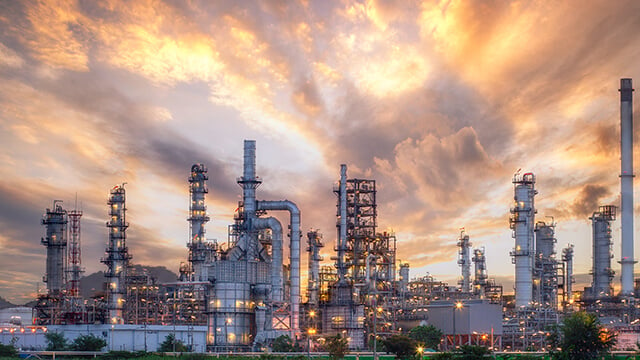Saving €1.4 million annually: how Rayong Olefins cut energy costs with Alfa Laval heat recovery
In the highly competitive ethylene market, reducing operating costs is crucial for maintaining profitability. Rayong Olefins Company, located in the Map Ta Put Industrial Estate in Thailand, embarked on an energy-saving initiative to enhance efficiency and cut costs. By collaborating with Alfa Laval and installing a Compabloc 120 heat exchanger, the company achieved significant energy savings and improved operational performance.
DATE 2025-06-24Récupérer plus de chaleur à partir du fluide de trempe
La production d'éthylène est une activité à forte intensité énergétique, les coûts énergétiques constituant une part substantielle des dépenses d'exploitation totales. Même de petites améliorations de l'efficacité énergétique peuvent avoir un impact considérable sur les résultats. Avant, Rayong Olefins a lancé un projet visant à explorer de nouveaux moyens d'économiser l'énergie. À l'époque, l'usine n'utilisait pas d'échangeurs de chaleur compacts dans ses processus de base, se contentant de quelques échangeurs en position utilitaire.
Le principal défi consistait à récupérer davantage de chaleur à partir du fluide de trempe utilisé pour refroidir le gaz de traitement après le craqueur. Ce fluide de trempe contient de grandes quantités d'énergie, mais l'échangeur de chaleur à calandre existant n'était pas très performant, ce qui entraînait un gaspillage d'énergie important. L'objectif était d'augmenter la récupération de chaleur et de réduire la consommation d'énergie.
L'échangeur thermique Compabloc pour améliorer l'efficacité thermique
Alfa Laval, en collaboration avec l'agent local Hydrocarbon Solutions (Thailand) Co. Ltd, a présenté une gamme d'échangeurs de chaleur compacts entièrement soudés. Après une évaluation approfondie, Rayong Olefins a décidé d'installer un échangeur de chaleur Compabloc 120 en série avec l'unité tubulaire existante. Cette solution a été choisie pour sa capacité à supporter des températures et des pressions élevées, ainsi que pour sa taille compacte et son efficacité thermique élevée.
La consommation de vapeur dans le dégazeur a diminué de 43 %, passant de 35 tonnes/heure à 20 tonnes/heure après l'installation du Compabloc 120. Nous sommes également très satisfaits de la taille compacte et de l'encombrement réduit du Compabloc.
Déclare Wirasak Sonamthiang, responsable de la section aromatique.
Un échangeur à design compact et économe en énergie
Le processus de mise en œuvre a comporté plusieurs étapes clés :
- Évaluation et approbation : Les ingénieurs de Rayong Olefins et d'Alfa Laval ont mené une analyse détaillée pour identifier les possibilités d'utiliser des échangeurs de chaleur compacts dans l'usine. Le Compabloc 120 a été sélectionné pour ses performances supérieures et son design compact.
- Installation : Le Compabloc 120 a été installé en série avec l'échangeur de chaleur à calandre existant. Cette installation a permis d'augmenter la récupération de chaleur du fluide de trempe, qui a ensuite été utilisée pour préchauffer l'eau d'alimentation de la chaudière.
- Optimisation : L'installation a permis d'augmenter la température de l'eau d'alimentation de la chaudière entrant dans le dégazeur, réduisant ainsi la quantité de chaleur nécessaire pour libérer l'oxygène de l'eau. Cette optimisation a permis de réaliser d'importantes économies d'énergie.
Vue d'ensemble du processus
Augmentation de la récupération de chaleur et retour sur investissement en moins de 6 mois
L'installation de l'échangeur de chaleur Compabloc 120 a apporté des avantages substantiels à Rayong Olefins :
- Économies d'énergie: L'entreprise a réalisé des économies d'énergie annuelles de 1,4 million d'euros en augmentant la récupération de chaleur de 5,5 MW. Le temps de retour sur investissement, y compris les coûts d'installation, a été inférieur à six mois.
- Réduction de la consommation de vapeur: La consommation de vapeur dans le dégazeur a baissé de 43 %, passant de 35 tonnes par heure à 20 tonnes par heure, grâce à la température plus élevée de l'eau d'alimentation de la chaudière.
- Conception compacte: La taille compacte et l'encombrement réduit du Compabloc 120 ont permis une installation et une intégration faciles dans le système existant.
- Fonctionnement sans entretien: Le flux très turbulent et la conception du Compabloc 120 l'ont rendu moins sujet à l'encrassement que les échangeurs de chaleur à tubes et à calandre. Deux ans après l'installation, il n'y avait toujours pas besoin de nettoyage, d'où des besoins de maintenance minimes.
La collaboration entre Rayong Olefins Company et Alfa Laval pour améliorer l'efficacité énergétique grâce à l'installation d'un échangeur de chaleur Compabloc 120 s'est avérée être une initiative fructueuse. Les économies d'énergie significatives, la réduction de la consommation de vapeur et le fonctionnement sans entretien ont contribué à l'objectif de l'entreprise de produire de l'éthylène en flux tendu, assurant ainsi sa compétitivité sur le marché mondial.
Download
Le modèle Compabloc à bloc soudé est à la fois compact et entièrement soudé. Sa conception permet de traiter aisément des fluides agressifs, des températures et des pressions élevées, ainsi que des débits asymétriques.
Infos clés
Température de conception
400°C (752°F), jusqu'à -100 °C (-148°F)
Pression de conception
Du vide complet à 42 barg (600 psig)
Surface maximale de transfert de chaleur
840 m2 (8 985 ft2)
Matériaux de construction
316L, SMO254, 904L (UB6), titane, C-276/C-22/C-2000


